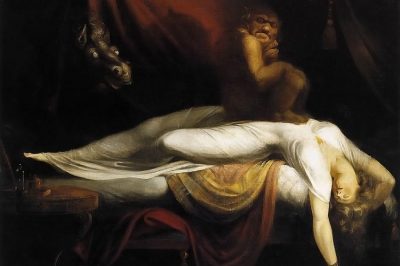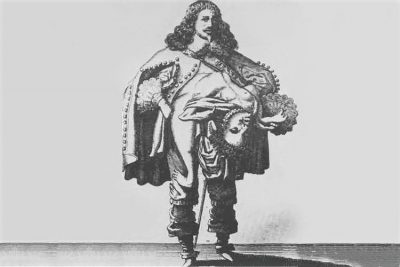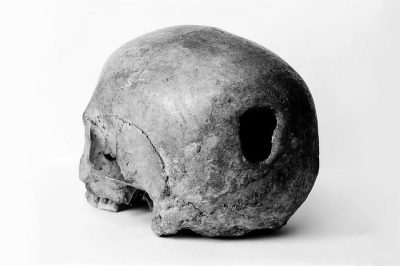Dancing Plague of 1518: When People Nearly Danced to Their Deaths
Share

Reproduced illustration of dancing plague by Pieter Brueghel, who witnessed the event. (Pieter Bruegel d. Ä / Das gesamte graphische Werk)
The beautiful historic city of Strasbourg is the capital of the Alsace region in France. Located on the eastern border of France with Germany, it is the second most popular tourist destination in France. Unfortunately, there was a time when dancing proved to be fatal in Strasbourg. In 1518 the city of Strasbourg was crippled with the dancing plague which ended up taking the lives of many.
How did it begin?
It all started on July 14, 1518, a woman named, Frau Troffea (German for Mrs. Troffea), came out of her home onto the street of Strasbourg and started dancing silently. There was no music to be heard and no performers on the street. She seemed to be dancing and swaying to some internal melody. Despite her husband’s repeated pleas to stop, she continued dancing till she finally collapsed of exhaustion. She managed to sleep for a few hours only to wake up and start dancing again. Her feet were swollen but that did not seem to deter her. By the third day, Frau Troffea’s feet had started to bleed but she showed no signs of stopping.
By that time she was not only gawked at but also joined by others who danced with her in the blazing summer sun in a trance. She danced for six days, nonstop, after which she was sent away to the shrine of St. Vitus near Saverne. At that time, it was believed that she had been cursed by the saint and could only be cured at his place of worship. However, she died, presumably from exhaustion or heat stroke.
Nonetheless, within a week of commencement of Frau Troffea’s madness, more than 30 people had started dancing in a similar maniacal manner. The hysteria spread and by the end of the month, as many as 400 people were exhibiting the dancing psychosis akin to the woman who started it all. Perplexed with the ongoing dancing frenzy, the town officials consulted physicians who attributed the actions to ‘overheated blood’ in the brain. It was officially decided to ‘treat’ them with more dancing till they cooled down.
Treatment
Guild halls and grain markets were cleared to contain the dancers. Musicians, pipers and drummers were hired to maintain the tempo until the sickness wore off. However, the plan of dancing it off did not work and slowly people started dying. Exhaustion, heat stroke and even heart attacks due to exertion became the cause of deaths. It seemed that this sickness affected women more. Though there are no records of the number of deaths, based on hearsay, it is speculated that the epidemic took 15 lives a day. Not getting the desired result, the music was called off. Dancing and music were banned in Strasbourg during that period of time.
Finally, priests and officials came to the conclusion that the people had been cursed by St. Vitus who died as a martyr during the persecution of Christians. They were sent to the shrine near Saverne to be cured, much like Frau Troffea. At the shrine, the priests put the dancers under the statue of St. Vitus and placed the holy cross in their hands. Red shoes painted with consecrated oil were sprinkled with holy water and put on their feet. The ritual was observed with the chanting of Latin verses and burning of incense. Curiously, this seemed to placate the agitated dancers and helped in curbing their incessant actions. As word spread, more and more people were sent to the shrine for treatment and by early September, the dancing plague had diminished.
What caused the dancing plague of 1518?
John Waller, an associate professor of the Department of History of Medicine at Michigan State University, hypothesised about the cause of the dancing plague. In his book ‘A Time to Dance, A Time to Die’, Waller has put forth the argument that the series of events were the results of extreme anxiety and fear of the divine. Since the dancers seemed to be dancing in a state of trance, it could have been brought upon by extreme psychological distress. According to him, people under stress tend to go into a trance and combined with the belief in spirits, it led to the conclusion of being possessed or cursed. It was a time when people were suffering from poverty, famine and diseases. It seemed appropriate that they were disillusioned with life and in depression, causing their irrational behaviour.
According to Swiss physician and alchemist Paracelsus, this antic of Frau Troffea’s was basically to antagonise her husband. As the other women saw her successful attempt in annoying her husband, they too joined in. However, this does sound a little over the top in today’s times. There have been theories of ergot poisoning at that time also. Modern historians believe that this mould growing on damp rye could have been accidentally ingested which is known to cause hallucinations and twitching of muscles. This condition is also known as Saint Anthony’s Fire.
Similar events in the year 1374 & 1491
However, centuries before the ‘Dancing Plague of 1518’, a similar frenzy had been recorded in the valley of river Rhine in 1374. People from the medieval towns along the valley were gripped by dance frenzy. This went on for several months till the epidemic ended as mysteriously and abruptly as it had begun. The nuns of the Augustinian convent at Quesnoy le Conte in Cambrai displayed bizarre signs of mass hysteria during Easter in 1491. They behaved like cats and their eyes rolled in the sockets. This kind of unexplained conduct was repeatedly reported from convents for the next few centuries.
These phenomena remain unsolved and only lead us to marvel at the complexity of the human brain. With the progress of science, it has become possible to study the brain but even today, there are areas that remain unexplored and unexplained.
Enjoyed this article? Also, check out “The Black Death: When Tens of Millions of Europe’s Population Was Killed by the Bubonic Plague“.
Recommended Read:
A Time to Dance, A Time to Die: The Extraordinary Story of the Dancing Plague of 1518 | By John Waller
Fact Analysis:
STSTW Media strives to deliver accurate information through careful research. However, things can go wrong. If you find the above article inaccurate or biased, please let us know at [email protected]













